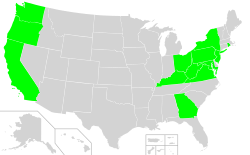| Psilocybe ovoideocystidiata | |||
|---|---|---|---|
 | |||
| Scientific classification | |||
| Domain: | Eukaryota | ||
| Kingdom: | Fungi | ||
| Division: | Basidiomycota | ||
| Class: | Agaricomycetes | ||
| Order: | Agaricales | ||
| Family: | Hymenogastraceae | ||
| Genus: | Psilocybe | ||
| Species: | P. ovoideocystidiata | ||
| Binomial name | |||
| Psilocybe ovoideocystidiata | |||
 | |||
Range of Psilocybe ovoideocystidiata in the contiguous U.S.
| |||
| Psilocybe ovoideocystidiata | |
|---|---|
| Gills on hymenium | |
| Cap is convex or umbonate | |
| Hymenium is adnate | |
| Stipe has a ring | |
| Spore print is blackish-brown to purple | |
| Ecology is saprotrophic | |
| Edibility is psychoactive | |

Psilocybe ovoideocystidiata, commonly known as ovoid, psychedelic ovoid mushroom, or river teacher is a psilocybin mushroom native to North America. [1] It is closely related to P. subaeruginascens from Java, P. septentrionalis from Japan, and P. wayanadensis from India. This mushroom was first documented by Richard V. Gaines in Montgomery County, Pennsylvania in June 2003. [2]
